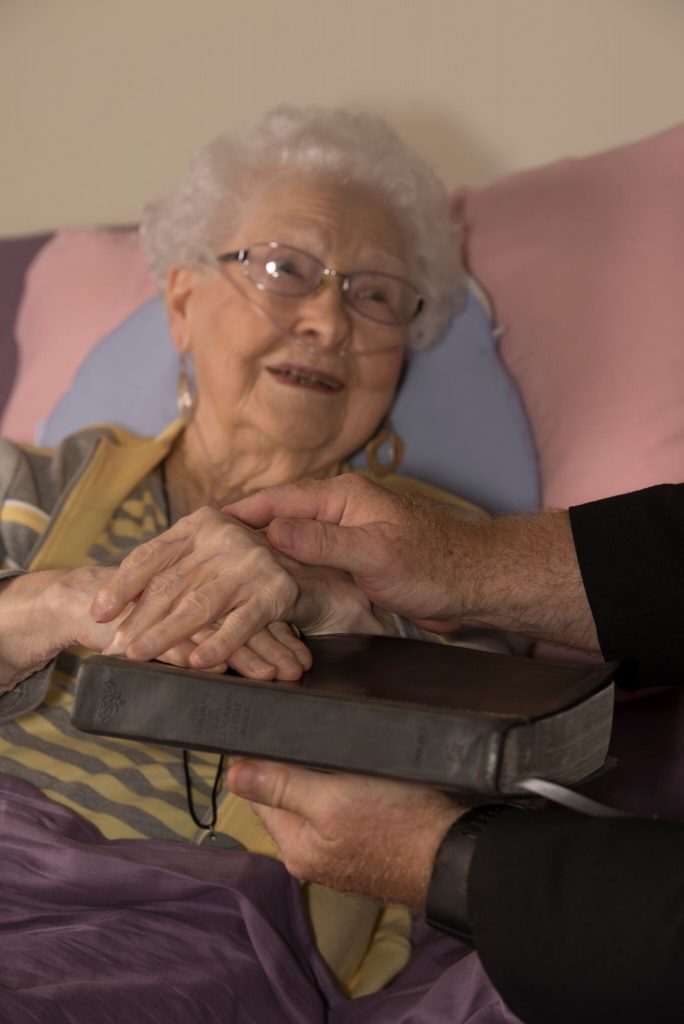Today, Americans facing a terminal illness can turn to hospice for medical care, practical assistance, and compassionate support that can make this inherently difficult time a little easier for both the patient and their family. However, hospice care wasn’t always an option. In fact, organized hospice care for those facing end-of-life issues is a fairly recent invention. When did hospice start? What is the history behind this compassionate form of health care?
Death is a natural part of any organism’s life cycle, so caring for those who are dying is a task that humans have confronted forever. The concept of hospice care can trace its roots back to medieval times. Although the idea of caring for those approaching the end of their lives has remained constant, the expectations and approaches used have changed as hospice care has evolved.
The Origins of Hospice Care
The term hospice can trace its origins back to the Latin word “hospes.” The word is associated with hospitality and can be used to identify either a traveling guest or their host. According to Dr. Stephen Lutz, the idea of hospice care as a form of hospitality first emerged during the Middle Ages as crusaders established places dedicated to the care of both travelers and those who were seriously ill or dying. For centuries, these institutions were largely administered by various religious orders, so the availability of these shelters and the services they offered waxed and waned depending on the fortunes of the religious groups that were committed to providing them. Eventually, the accepted definition of hospice narrowed from meeting the needs of travelers of all kinds to caring for those who were ill or facing the end of life.
The Birth of Modern Hospice Care
When did hospice start? Most scholars feel that the modern concept of hospice care took off in the 1960s thanks in large part to the efforts of Dame Cicely Saunders. A physician who began working with the terminally ill in 1948, Saunders was the first to use the term hospice to refer to specialized care for dying patients. While most of the medical community strove for curative care, she argued persuasively that medical technology should be utilized to control symptoms and increase comfort among those facing the end of life. In 1967, she established St. Christopher’s Hospice, the first modern hospice, in a residential suburb of London.
The Start of Hospice Care in the United States
When did hospice start in the United States? After attending a 1963 lecture by Saunders, Florence Wald, the dean of the Yale School of Nursing, became firmly committed to the idea of compassionate end-of-life care delivered by nurses and other knowledgeable professionals. As social reformers fueled a growing public discussion of patients’ rights, the concept of informed consent, and the importance of quality of life, Wald stepped down as dean to conduct observational studies regarding dying patients and their families and the care they received. This research and Wald’s efforts at reform would eventually lead to the launch of one of the country’s first modern hospice programs, Hospice, Inc. The goal of the program’s founders was to establish a hospice that followed certain principles in its care of terminally ill patients:
- The hospice would function as a community of health care professionals, patients, and their families.
- Socialization and community participation would be encouraged.
- An interdisciplinary approach would enable professionals to combine their efforts and help each other to better provide effective patient care.
A Growing Acceptance
In 1974, Wald and her supporters launched the Connecticut Hospice, the nation’s first home-care hospice program, in Branford, Connecticut. Soon, similar programs would pop up around the country. In 1978, a task force from the U.S. Department of Health, Education, and Welfare declared hospice was a viable concept that offered a way to provide “humane care for Americans dying of terminal illness while possibly reducing costs” and called for federal support for hospice. The call was answered in 1982 when Congress established a Medicare hospice benefit, which was made permanent in 1986.
Hospice Today
Today, hospice is widely recognized for its ability to provide useful care that can improve the quality of life of those facing a terminal diagnosis. By using an interdisciplinary approach that combines the talents of doctors, nurses, social workers, religious leaders, and volunteers and ensures that the patient and their family retain control of their care, hospice care provides invaluable support and care for those facing the challenges that arise during the end of one’s life.
When curative treatments fail, hospice provides compassionate, knowledgeable care that allows people to make the most of the time that they have. At Phoenix Home Care & Hospice, we take pride in offering client-focused care that improves the quality of life of those we serve. To learn more about hospice or our services, contact us today.






